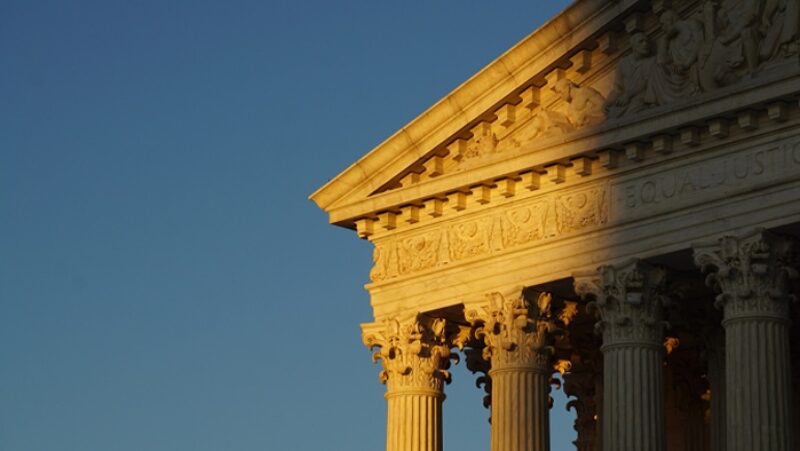Violence in Media: How (and Why) Graphic Images Make the News

Whenever shocking videos hit the news, it revives talk of violence in media and how, when and if the media should print, post or air violent images.
As we recognize Sunshine Week, an annual review of what information is or should be available to the public, let’s consider two of the latest videos that shocked the nation: The abhorrent beating and tasing of Tyre Nichols by Memphis police and the assault on Paul Pelosi by a hammer-wielding assailant.
Violence in media and the role of the press
Both incidents were insults to humanity, and that’s exactly why an independent free press did the right thing by bringing those images to us. A free press must deliver those images no matter how hard they are to watch and how repugnant the violence is to any fair-minded person.
In Nichols’ case, a combination of videos showed an unresisting victim subjected to abuse by multiple officers and then being denied medical attention. It’s the latest moment in which we have had to confront lawlessness by the very people charged with enforcing our laws.
Security video and police body cameras showed a man breaking into the home of former Speaker of the House Nancy Pelosi and then later grappling with her husband Paul Pelosi for control of a hammer, before the assailant wrested it free and slammed it into his skull. In addition to being evidence of the crime, the Pelosi video also refutes scurrilous online posts looking for political gain by saying that Pelosi had invited the man into his home.
Watch we must, if only to gauge for ourselves the scope and horror of each one. A free press' role as “watchdog” exists not just to bite but also to bark warnings when something transgresses our collective safety, morality and national identity.
As news consumers, we’re all challenged today with videos from multiple sources that produce a tidal wave of imagery, many posted without context or shaped by personal views, political strategies or simply serving as clickbait.
In contrast, newsroom decisions are rooted in long-term experience and professional standards. Journalism groups such as the Radio Television Digital News Association have extensive ethics codes that remind decision-makers to minimize potential harm and to avoid sensationalizing what’s posted, seen or printed.
Inside one newsroom’s decision to air violent footage
Austin American-Statesman Executive Editor Manny García shares the decision-making process and challenges involved in publishing security footage from inside the Uvalde, Texas, elementary school during the May 2022 shooting there. The outlet’s video report edited out the screams of children but not the sounds of gunfire to hold law enforcement accountable for misleading narratives about their response and to counter misinformation.
To be sure, not all news outlets live by such codes, but most do – and it’s glaringly clear when they don’t.
In these examples, broadcast and cable news outlets took steps to warn of the graphic nature. In the Pelosi video, most airings intentionally halted the video just before the hammer blow landed.
Of the Nichols video, ABC News anchor David Muir said the images were so “difficult” that only portions would be shown. News anchors quickly began warning viewers that the images they were about to see were “disturbing,” and some even advised that the videos were not suitable for children to view.
CNN and others reported that social media platforms brought their own “terms of service” to bear, and NBC News said the Nichols video “has been identified by the YouTube community as inappropriate or offensive to some audiences.”
Deserving of criticism: The self-serving drumbeat in several media outlets leading up to the moment Memphis police released the Nichols video. It most closely resembled a lead-in to a lottery prize drawing or the on-screen countdown to midnight on New Year’s Eve. Neither was appropriate for the release of a video showing graphic violence that led to a death.
Shock and debate over violence in media is not new. During the Civil War, the public saw for the first time the true pictures of shattered bodies, grotesque injuries and fields filled with corpses. A report by the Battlefield Trust says, “Civil War photographs stripped away much of the Victorian-era romance around warfare.” Images during the two World Wars countered government propaganda that attempted to hide the horrors of war. And there is no doubt that daily release of graphic images from Vietnam contributed to the loss of public and political support for U.S. involvement there.
Most recently, footage of the 1991 beating of Rodney King by Los Angeles police, the inhuman assault of George Floyd in 2020 by Minneapolis police and Nichols’ assault and death have provided an electronic window into criminal incidents that might otherwise have been filed under “resisting arrest” or some similarly distorted accounts.
In an era where all too many have little to no faith in what the free press reports, these real-time video accounts at least provide a common starting point for discussion and debate over police procedures and training.
Civil Rights-era photos and TV news reports could not be refuted by those who denied or distorted for decades the level of abuse and violence being directed at Black people. Films of Nazi concentration camps still stand to refute Holocaust deniers. And modern videos, from police body cameras and civilian cellphone footage, are a new, effective tool to counter false or misleading police reports of victims “resisting arrest” or attempting to grab weapons.
Yes, many of those images are too awful to see.
And too awful not to see.
Gene Policinski is a senior fellow for the First Amendment at the Freedom Forum. He can be reached at [email protected].
Perspective: The Roe v. Wade Leak Shows the Benefit of a Free Press
You Have a Right to Speak, Assemble, Petition — So Now, Register to Vote
Related Content
$30,000 Giving Challenge
Support the Freedom Forum’s First Amendment mission by Dec 31st and double your impact.

